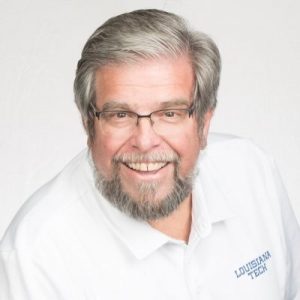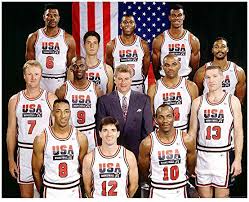The NBA Finals date back to 1947 (when they were known as the Basketball Association of America Finals) and the very 1st NCAA tourney was held in 1939. Olympic basketball competition is even older: it debuted as a demonstration event in 1904 and the men’s version became a medal sport in 1936, with the women finally getting their chance to go for the gold in 1976. The United States has dominated Olympic basketball competition from the start: the men have won 15 gold medals in the 18 tournaments they have participated in during the past 84 years, while the women have won 8 gold medals in the 10 tournaments in which they have competed during the past 44 years. Those of you who were looking forward to the 2020 Olympics opening ceremonies in Tokyo on July 24, 2020 will have to wait an extra 364 days, as the coronavirus caused a postponement until July 23, 2021. Due to the absence of college basketball since mid-March, HoopsHD’s Jon Teitel decided to fill the void by trying to interview as many prior Olympic players/coaches as possible so that you have something to read this summer while not watching the Summer Games. We continue our coverage by chatting with sports photographer/former Louisiana Tech team manager Tom Morris about Karl Malone winning a pair of gold medals in 1992/1996. Today marks the 28th anniversary of Karl scoring 6 PTS in a 117-85 win over Croatia to clinch the 1st of his 2 gold medals.
Karl’s nickname was “The Mailman”: who gave it to him, and how did he like it? There was a student worker in the SID office named Teddy Allen who grew up to become a notable writer. They were sitting around 1 day trying to come up with nicknames and Teddy suggested “The Mailman” because Karl always delivered. Around that time Karl broke a backboard for the 1st time, and after sweeping it up they kept many pieces of the glass. The SID decided to send out the pieces to sportswriters with a note that the glass was delivered by “The Mailman”! I was the photographer of the local newspaper and was the 1st person to take a photo of him dressed as a post office worker complete with cap/satchel. Karl thought that it was a pretty cool nickname.
In 1983 he was named conference POY: what did it mean to him to receive such an outstanding honor? It meant a lot to both Karl and the program. The women’s basketball team was drawing more people than the men at the time: many fans left during the intermission between the 2 games. After Karl showed up they would start to have a full house for 4-5 hours during both games: he really helped the program grow in popularity.
He helped lead the Bulldogs to their 1st-ever NCAA tourney in 1984, where he scored 18 PTS in an 8-PT loss to eventual national runner-up Houston: what was it like to see him hold his own against fellow future Hall of Famer Hakeem Olajuwon (16 PTS/12 REB/4 BLK)? I think that was a Friday night game in Memphis between the Dunking Dogs and Phi Slamma Jamma. I watched it on TV and there were some thunderous dunks performed by both teams. Karl had 1 slam that would have made him an honorary member of Phi Slamma Jamma!
In the 1985 NCAA tourney he had 20 PTS/16 REB while playing all 45 minutes in a 2-PT OT loss to Oklahoma: how close did he come to pulling off the upset over a top-5 Sooners team featuring Wayman Tisdale (23 PTS/11 REB)? The last basket by Tisdale was a tip-in that bounced 4-5 times all over the rim before it finally went in. It was THAT close to being an upset.
On January 27, 1990, he scored a career-high 61 PTS as a player for Utah in a 48-PT win over Milwaukee, and his 36,928 career PTS ranks #2 in NBA history behind Kareem Abdul-Jabbar: what was his secret for being a great scorer? The secret was his PG: the pick-and-roll with John Stockton. They perfected it and they knew each other so well that defenders had no answer for it.
After team USA lost to the Soviet Union in the 1988 Olympics they decided to form the “Dream Team” 4 years later: were you surprised that they switched from college players to pro players, and how important was it for him to make the team after not getting selected back in 1984? It was disappointing that he did not make it in 1984 but when they started using pros in 1992 it was kind of automatic that they would select him because he was 1 of the best ever. Karl was not the greatest college player that I have ever seen: he developed his game/commitment/FT shooting after reaching the NBA. He was a big boy in college but super-big in the pro game.
He appeared in the playoffs during every single season of his career and made the NBA Finals 3 times in an 8-year span from 1997-2004: did you consider his playoff career a success (since he made so many Finals), a failure (due to never winning a title), or something in between? We view his entire pro career as great overall. He was bigger than life and still is: he is so involved in the community here. I compare him to Phil Mickelson: he was a darn good golfer but kept running into Tiger Woods in the majors. The Bulls and Jazz had tremendous playoff duels.
He still holds the records for the most FTM/FTA in NBA history: how was he able to keep getting to the FT line over and over? The reason he got there so much is that he kept driving to the hoop with the ball. Everyone tried to get a piece of him so he realized that he needed to start learning to shoot FTs better, which he did after dedicating himself. He became the model basketball player in the weight room, which is the difference between college and the pros.
His 1471 career games started is also the most all-time: how was he able to stick around for such a long time? Not getting hurt! He stayed in shape but I am sure that luck had a lot to do with that, especially with the physical way they played back then.
He was a 2-time NBA MVP/14-time All-Star and was inducted into the Hall of Fame twice in 2010 (both for his individual career and as a member of the Dream Team): when people look back on his career, how do you think that he should be remembered the most? Just like the league did when naming him 1 of the top-50 players in the history of the NBA. He is still in the conversation as the best PF ever and when they mention “The Mailman” you know exactly who they are talking about. He still donates to causes and helps out people in need but does not publicize it. He remains involved in different things and is a big outdoorsman: he has a big presence in the community.



